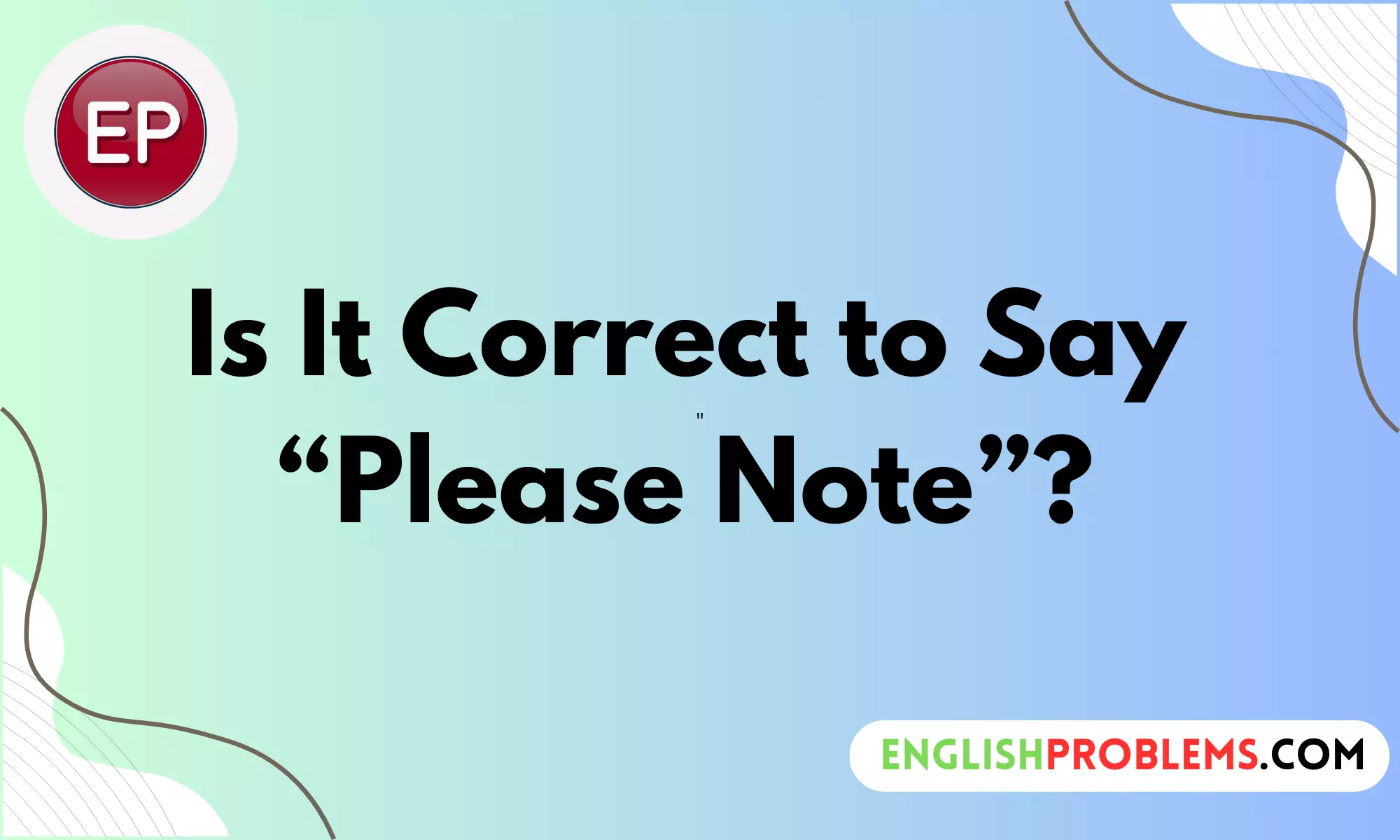When navigating professional communication, clarity and precision are paramount. One common phrase that often comes up is “please note.” This seemingly simple expression is used in various contexts, from business emails to official memos. But is it always the right choice?
In this article, we’ll delve into the phrase “please note,” exploring its correct usage, alternatives, and best practices to ensure your communications are both effective and appropriate.
Understanding the Phrase “Please Note”
“Please note” is a polite directive used to draw attention to important information. It’s commonly employed to highlight key details or ensure that specific points are noticed by the reader. Here’s a closer look at the phrase:
- Definition: The phrase “please note” functions as a signal to the reader that the following information is significant and requires attention.
- Common Usage: You might encounter “please note” in various settings, including:
- Emails: “Please note that the meeting time has been changed.”
- Reports: “Please note the updated figures in the attached document.”
- Official Notices: “Please note the new office hours effective from next week.”
- Examples:
- Business Email: “Please note that all employees must submit their expense reports by Friday.”
- Memo: “Please note the changes in the policy regarding remote work.”
Is “Please Note” Correct to Use?
To determine if “please note” is the right choice, let’s break down its correctness and appropriateness:
- Grammatical Analysis: From a grammatical perspective, “please note” is correct. It serves as an imperative statement where “please” adds politeness and “note” directs attention.
- Formality: The phrase conveys a formal tone, which is suitable for professional and official contexts. It’s often used to communicate important information without sounding abrupt.
- Comparison with Alternatives:
- “Be aware”: This phrase is slightly less formal but conveys a similar sense of importance. Example: “Be aware that the deadline is approaching.”
- “Take note”: This variant can be used interchangeably with “please note,” often in educational or instructional settings. Example: “Take note of the following changes.”
- “Remember”: Less formal, used for reminders rather than highlighting important details. Example: “Remember to complete the form before the end of the day.”
When to Use “Please Note”
Knowing when to use “please note” can enhance your communication. Here’s a breakdown:
- Professional Contexts:
- Business Communication: Ideal for emails, reports, and meetings where highlighting important information is necessary. It adds a layer of politeness and formality.
- Examples:
- Email: “Please note that the project deadline has been moved to next month.”
- Memo: “Please note the updated procedure for submitting travel requests.”
- Educational Settings:
- Instructional Materials: Useful in manuals or guides to draw attention to key instructions or updates. Example: “Please note the changes in the grading policy for this semester.”
- Examples:
- Guide: “Please note the required materials for the upcoming lab session.”
- Limitations:
- Overuse: Using “please note” excessively can make communication sound repetitive or overly formal. It’s best used sparingly.
- Alternative Contexts: In casual or less formal settings, consider using simpler phrases.
Alternatives to “Please Note”
While “please note” is useful, there are various alternatives that can fit different contexts and tones. Here’s a look at some options:
- Synonyms and Variants:
- “Keep in mind”: Informal yet effective for drawing attention. Example: “Keep in mind the new deadline for submissions.”
- “It is important to”: Emphasizes significance. Example: “It is important to review the attached guidelines.”
- “Be advised”: Adds a formal tone. Example: “Be advised of the upcoming system maintenance.”
Comparison Table:
PhraseContextToneExamplePlease noteProfessional/FormalPolite/Formal“Please note the new office policy.”Keep in mindInformal/FormalNeutral/Informal“Keep in mind that the deadline is approaching.”It is important toFormal/InstructionalFormal“It is important to follow the new procedures.”Be advisedFormalFormal“Be advised that the meeting has been rescheduled.”
Crafting Effective Communication
Effective communication goes beyond choosing the right phrase. Here’s how to enhance your writing:
- Tone and Style:
- Professional Tone: Maintain a respectful and professional tone, especially in formal settings.
- Conversational Tone: In informal contexts, a friendly and approachable style can be more engaging.
- Conciseness:
- Be Direct: Avoid unnecessary words. For example, instead of saying “Please be aware of the fact that the deadline is next week,” simply say, “The deadline is next week.”
- Politeness and Professionalism:
- Use Polite Language: Phrases like “please” and “thank you” add a courteous touch. For example, “Please review the document at your earliest convenience.”
Conclusion
In summary, “please note” is a grammatically correct and formally appropriate phrase for drawing attention to important information. It serves well in professional and educational settings but should be used judiciously to avoid repetition. Alternatives like “keep in mind” or “be advised” can offer variety and suit different tones.
Final Thoughts: Consider your audience and context when choosing between “please note” and its alternatives. Experiment with different phrases to find the most effective way to communicate your message clearly and politely.

Justin Taylor is an expert in simplifying the intricacies of English for learners of all levels. His clear and concise writing style, combined with his deep understanding of linguistic nuances, makes him a go-to source for anyone looking to improve their language skills. Justin’s engaging content ensures that learning English is both enjoyable and effective.










